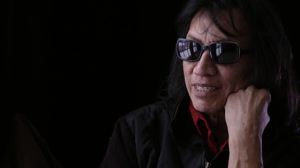I know there's no such thing as an easy sound editing gig, but working on _Searching for Sugar Man _must have felt like a huge gift. I'm sure that it was a challenge stitching together the audio for a story that spans several continents as well as nearly four decades. But in telling the impossible-sounding story of the musician Rodriguez (nee Sixto Rodriguez), director Malik Bendjelloul lets the music do as much of the talking as the various characters who weave in and out of the documentary narrative.
It's quite the narrative, too. After years of shuffling through the Detroit folk scene, some noted Motown producers were convinced Rodriguez could be the next Bob Dylan. But after releasing two albums to almost no sales, Rodriguez's career was seemingly thrown into the discard bin of music. Except it wasn't. Bootlegged copies of both albums made their way to the insular and apartheid nation of South Africa, where Rodriguez music became part of the national soundtrack, mentioned in the same breath as The Beatles and Rolling Stones (he's often described as being "bigger than Elvis").
But with only two albums released and no other information available in the state-controlled country, Rodriguez's fans came to only one conclusion: he was dead. The manner of his death changed depending on the storyteller: Did he light himself on fire as an act of protest? Was he shot? Did he overdose? The only point of agreement was that he must have died.
The fate of Rodriguez is what drives the first half of the film. Criss-crossing between Detroit and South Africa, Bendjelloul holds off the outcome a touch too long; this wouldn't be much of a search if there was nothing to find. But even in his physical absence, Rodriguez's spirit is always felt through his music. You obviously realized that the best way to get an audience to understand how Rodriguez's music could have captured a nation's imagination is to simply play large parts the songs uninterrupted. Watching Rodriquez (at times animated) make his way through Detroit's mean streets focuses our attention on each song's power - and gives insight into how they could speak so profoundly to people half a world away.
It's the man Rodriguez who's really at the heart of this film, though. His story contains the most unlikely of second acts. And watching Rodriguez finally understand that his perceived failure actually inspired millions - and hearing him talk about it all in his own, soft-spoken voice - is the real gift.
Leaning in to listen,
Casey







